Richard Kelly keeps showing up for ‘Donnie Darko,’ plus more of the week’s best films
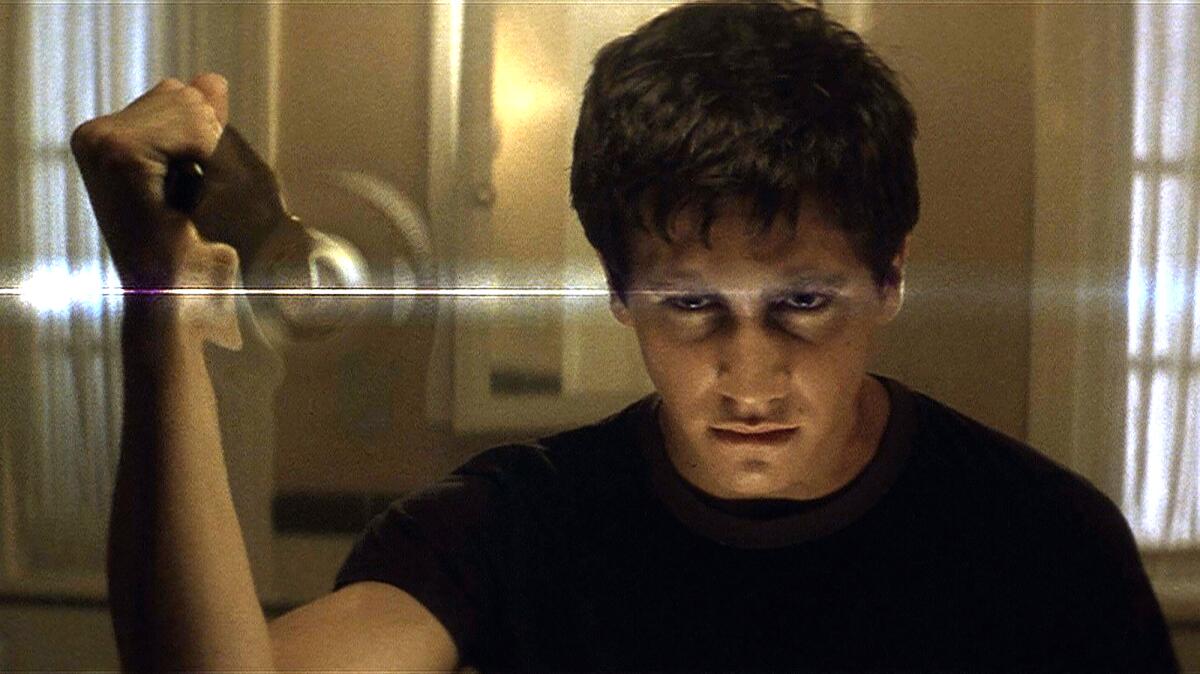
- Share via
Hello! I’m Mark Olsen. Welcome to another edition of your regular field guide to a world of Only Good Movies.
We couldn’t be more excited about the fact that our former colleague Justin Chang won a Pulitzer Prize this week for his 2023 film criticism written during his final full year at The Times.
He was recognized for a body of work that included essays on “Everything Everywhere All at Once” and “Oppenheimer,” as well as reviews of “All Dirt Roads Taste of Salt,” “All of Us Strangers,” “Past Lives,” “Indiana Jones and the Dial of Destiny” and “The Holdovers.”
“It’s been my great honor and privilege at the L.A. Times to advocate for the art that I love, and the art that moviegoers in Los Angeles love,” Chang said during a celebratory staff meeting over Zoom. “I know critics at other papers and other publications who’ve had to fight tooth and nail to cover the things that really matter to them. That was never a battle that I had to fight for one second at the L.A. Times.”
The lasting legacy of ‘Donnie Darko’
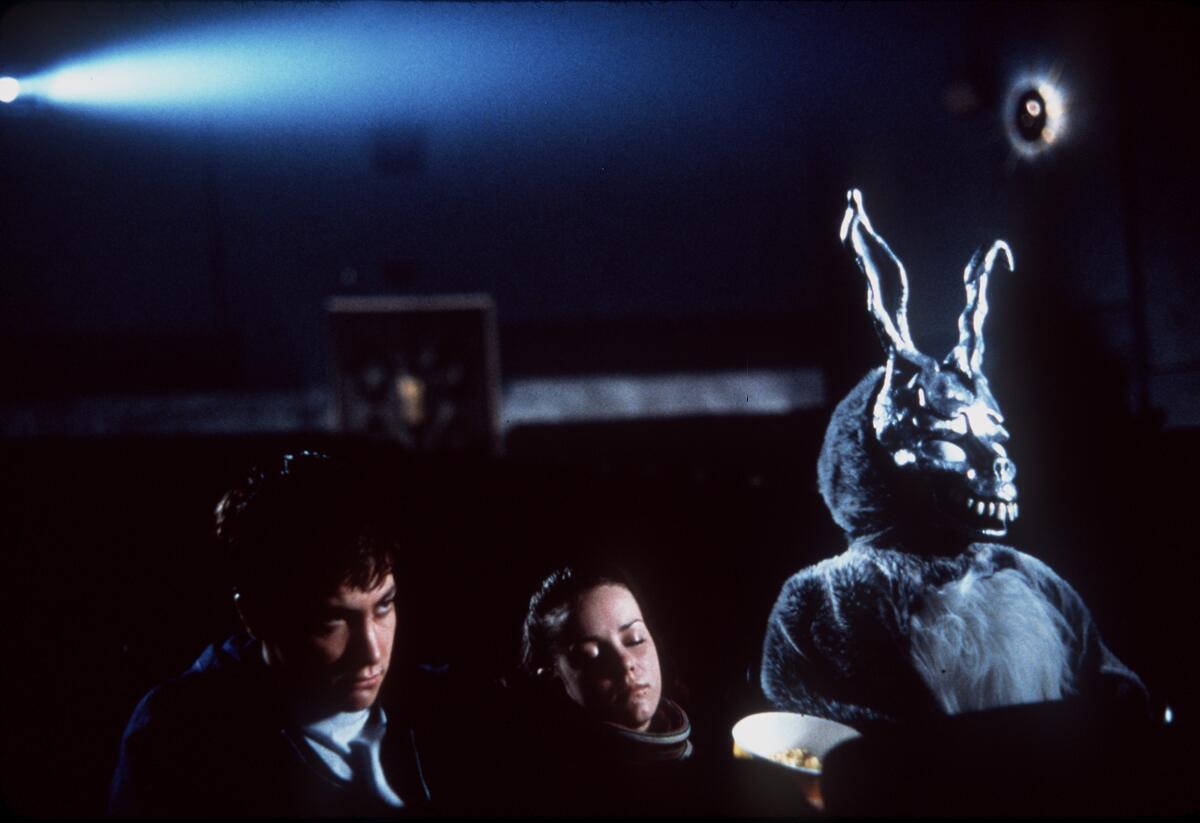
Tonight as part of the Academy Museum’s series on midnight movies, there will be screening of a 4K version of Richard Kelly’s 2001 “Donnie Darko” with the filmmaker in attendance.
The film was a flashpoint of controversy and conversation when it premiered at the Sundance Film Festival and then had the misfortune of being released to theaters not long after Sept. 11, 2001, when a story about a mentally ill teenage boy and an aircraft engine that mysteriously falls from the sky were not what audiences were looking for. Yet the film’s wide-eyed blend of Steven Spielberg, Stephen King, James Cameron and David Lynch — it’s a teen family drama combined with science fiction — would slowly build a fandom that still gains new converts to this day.
“I haven’t watched it all the way through in a long time,” said Kelly, 49, in an interview earlier this week. “All I can see are the things that I want to fix or that bother me about it still.”
Starring a young Jake Gyllenhaal as the title character (his sister Maggie plays his on-screen sibling), the story follows a late-’80s suburban teen who has gone off his meds and may be having experiences with time travel.
In the years since “Donnie Darko,” Kelly has completed only two other features, 2006’s “Southland Tales” and 2009’s “The Box,” with numerous potential projects falling by the wayside. Kelly says he signed away all of his rights to “Donnie Darko” back when he was only 24 years old in order to direct the film. (He has recently been working to get back some ownership of the property.)
“I show up at these screenings and go around the country, all over the world, and continue to carry the torch for this movie,” said Kelly. “I’m happy to do it because when you create something that has value, that people have continued interest in, I think the best thing you can do as an artist is just to be there in person and to show up for it.
“When I saw how it was connecting, all over the world, I felt, maybe there’s something universal about it,” said Kelly. “And maybe, regardless of the 1988 of it all, these themes are kind of timeless, whether it’s alienation or confronting authority or conformity or just the angst of the transition from a teenager into adulthood. So I am kind of amazed that it continues to connect, and very grateful for that.”
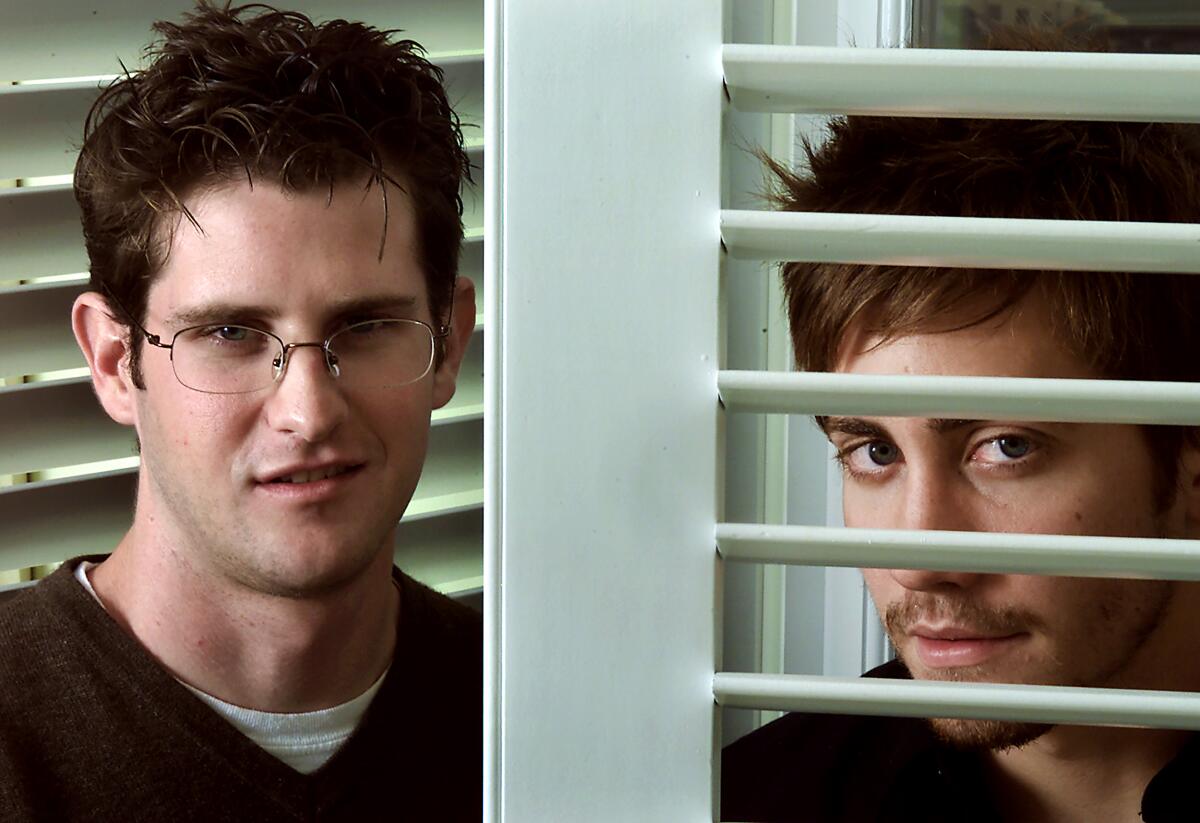
When Gyllenhaal was recently promoting the remake of “Road House” (in which he plays the role performed by Patrick Swayze), the “Nightcrawler” star spoke with deep affection about Swayze, who has a supporting role in “Donnie Darko.” Kelly noted that the infomercial footage sprinkled thorough “Donnie Darko” was actually only in the film because Swayze and his wife, Lisa Niemi Swayze, invited a small crew out to their ranch to shoot before the start of principal photography. Swayze’s wife rolled out a rack of clothes worn by the actor for various appearances and photoshoots during the ’80s.
“Everyone got really excited because they could already see the vibe of the movie and the feeling of the character and the kind of comedic absurdity of those infomercials,” recalled Kelly. “And it was all because of Patrick, because he just opened up his house for this first-time director. And he was willing to do that for us. It was so generous of him and of Lisa, his wonderful wife.”
Kelly also recalled the first time they shot the rabbit costume — known as Frank, played by James Duval — that has become such a big part of the film’s iconography. It was only the second day of shooting and the production was at Loyola High School in Los Angeles. Cinematographer Steven Poster took time to get the eerie lighting around the creature’s deformed face just right.
“And when Steven lit the rabbit, everyone got really quiet on set,” said Kelly. “And it was just like, everyone realized, ‘We don’t know what this is, but it’s working.’ It’s creating a feeling. And it was a sigh of relief because everyone wasn’t sure if it was going to be comical or if it was just going to be laughable or just ridiculous. And it is kind of all those things, an amalgamation of all those emotions and feelings.
“And I remember Steven came up to me as he was lighting it. He was the one responsible for making it look good,” said Kelly. “And he nodded to me like, OK, I get what you’re doing. You 25-year-old little bastard, I can’t believe they’re letting you get away with this. But we were in for the long haul. It was a moment.”
‘The Feeling That the Time for Doing Something Has Passed’

Written, directed, edited by and starring Joanna Arnow, “The Feeling That the Time for Doing Something Has Passed” is perhaps the boldest comedy of the year so far. Ann (Arnow), a thirtysomething woman living in Brooklyn, is seen as a submissive in a series of BDSM encounters with a number of men, while also navigating her family life and office job as a “clinical e-learning media specialist.” There is something both exacting and airy in the rhythmic precision of how performance, editing and camera placement combine to excavate an awkward humor from every moment, as the film explores when and how Ann has agency and power in her life.
Arnow recently got on a Zoom call along with executive producer Sean Baker, director of films such as “Starlet” and “Red Rocket” and the upcoming “Anora,” premiering soon at the Cannes Film Festival.
Baker was a judge on a short film contest that included Arnow’s 2015 “Bad at Dancing,” and though her film didn’t win, Baker reached out to her to say how much he liked it and the two kept in touch.
Arnow’s previous work includes 2013’s “I Hate Myself :)” a documentary about Arnow and a toxic boyfriend that plays with the same rhythms as her fictional work. In her feature debut with “The Feeling That…” Arnow expands her on-screen persona.
“I proudly call this auto-fiction because while it draws on aspects of personal experience, it’s not autobiographical,” said Arnow. “And a lot of that is about intent. It’s not intending to be a truthful story in any way, but I love calling it auto-fiction because I feel like mining that personal experience and those real details, I hope, adds more to the authenticity of the piece: casting my actual parents to play the parents, casting myself to play a version of myself.
“I just hope that all these touches of real experience make it a richer fabric,” she continued. “Sean’s films are an inspiration in the way that he includes both professional actors as well as first-time actors. I think that mix of acting styles gives it an exciting and alive texture.”

Arnow’s film joins a number of recent works, including “Passages,” “Love Lies Bleeding,” “Challengers” and even more commercial titles like “No Hard Feelings” and “Anyone but You” that are attempting to bring depictions of sex and intimacy back to movies after a period of relative chasteness.
“It just seems to me like sexuality is part of the human experience, so it seems something that’s very interesting to explore on film,” said Arnow. “I think the vulnerability and comedy of the absurd ways we connect with each other and the ways we wrestle with that is just something very interesting to me. Of course having them be safe and consensual is extremely important. But I didn’t really make this film to remedy a lack of sex scenes or for any representational politics.
“I do hope that it expands the way sex scenes are represented,” Arnow added. “We don’t see that many women in their 30s with larger bodies represented nude. So it’s meant a lot to me when people come up to me after a screening and say that they feel freer in some way to see a character like them represented in this way on screen. I am also interested in seeing BDSM represented in a way that feels more true, less sensationalized and presented with a sense of humor as well, since it’s really something that’s about role play and is a game. And I think people in the community see it with humor.”
Baker has never been one to shy away from sex scenes of explicit material in his own work, including, he hints, his upcoming “Anora”: “Just wait for the new one, man, wait for the new one,” he says with a laugh when asked about his opinion on sex in the movies.
“That’s what I really appreciated about Joanna’s approach to it, because it’s so objective and because there’s a real injection of humor,” said Baker. “It can be seen in different ways by everybody. Somebody may find it incredibly hot, somebody may not. It’s more about the individual audience member and how they react to it. It’s not as if Joanna set out to make the most steamy film ever for everybody. It’s not that. It can mean many different things to many different people.”
It speaks to the tightrope that Arnow’s film walks that it’s not entirely clear how audiences are meant to take the sex scenes, as farcically comic or actually hot.
“I think I was more just focused on having the sex scenes in the film being used to tell the story that I was trying to tell,” said Arnow. “And so any hotness or lack of hotness — because I’ve heard both things from audiences — is just a side effect of the story that I was going for.”
Other points of interest
Jean Eustache‘s ‘The Mother and the Whore’
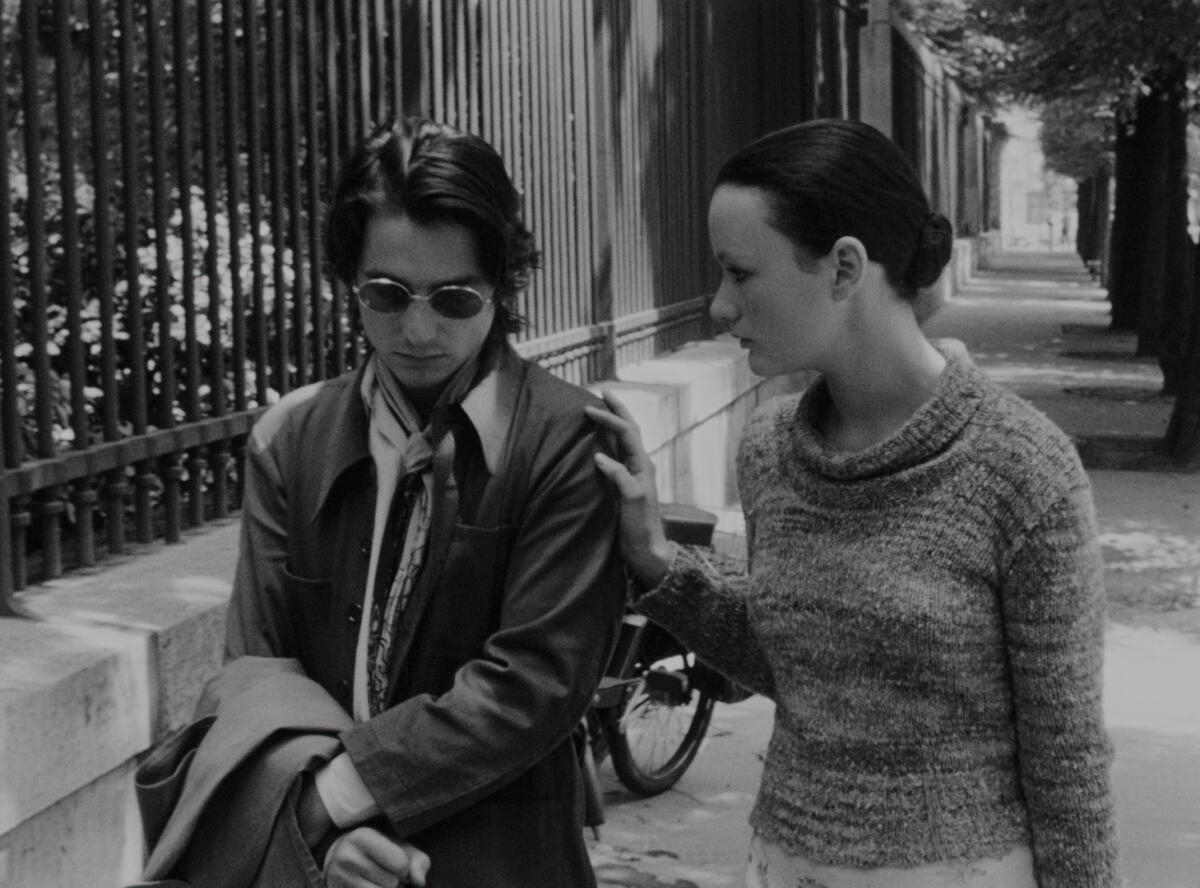
Jean Eustache’s 1973 “The Mother and the Whore” will be playing on Sunday at Chinatown’s Now Instant Image Hall, along with a conversation between author Rachel Kushner and writer-filmmaker Jean-Pierre Gorin.
Eustache’s work was difficult to see for far too long, due to protracted rights issues. Thankfully, those have largely been disentangled. Much of Eustache’s filmography is currently available on the Criterion Channel, but there is something specific and special about settling in for the full 219-minute experience of “The Mother and the Whore.” Starring Françoise Lebrun, Bernadette Lafont and Jean-Pierre Léaud, the film is a portrait of a generation in microcosm and idealism in decline, as a brief three-way relationship tears the main characters apart. (Fans of the recent “Past Lives” and “Challengers” should consider checking this one out.)
Writing for Harper’s in 2022, Kushner recalled her first time seeing “The Mother and the Whore” at New York’s venerable Film Forum in 1997, “I walked in with no sense of what I was in for. I left depleted, too sad to speak, certain this was the best movie I’d ever seen.”
In his original 1974 review of the film, Times critic Charles Champlin wrote, “It is too demanding for the drop-in moviegoer, but for those who think the future and the health of movies lies in daring to try what is, one way or another, unorthodox and exploratory, Eustache’s film is a mind-blowing and unexpectedly touching experience, commended to the well-rested, open-minded and strong-backed.”
And for those who are intrigued but can’t make it on Sunday, the movie is also currently available on the Criterion Channel.
Early Chantal Akerman
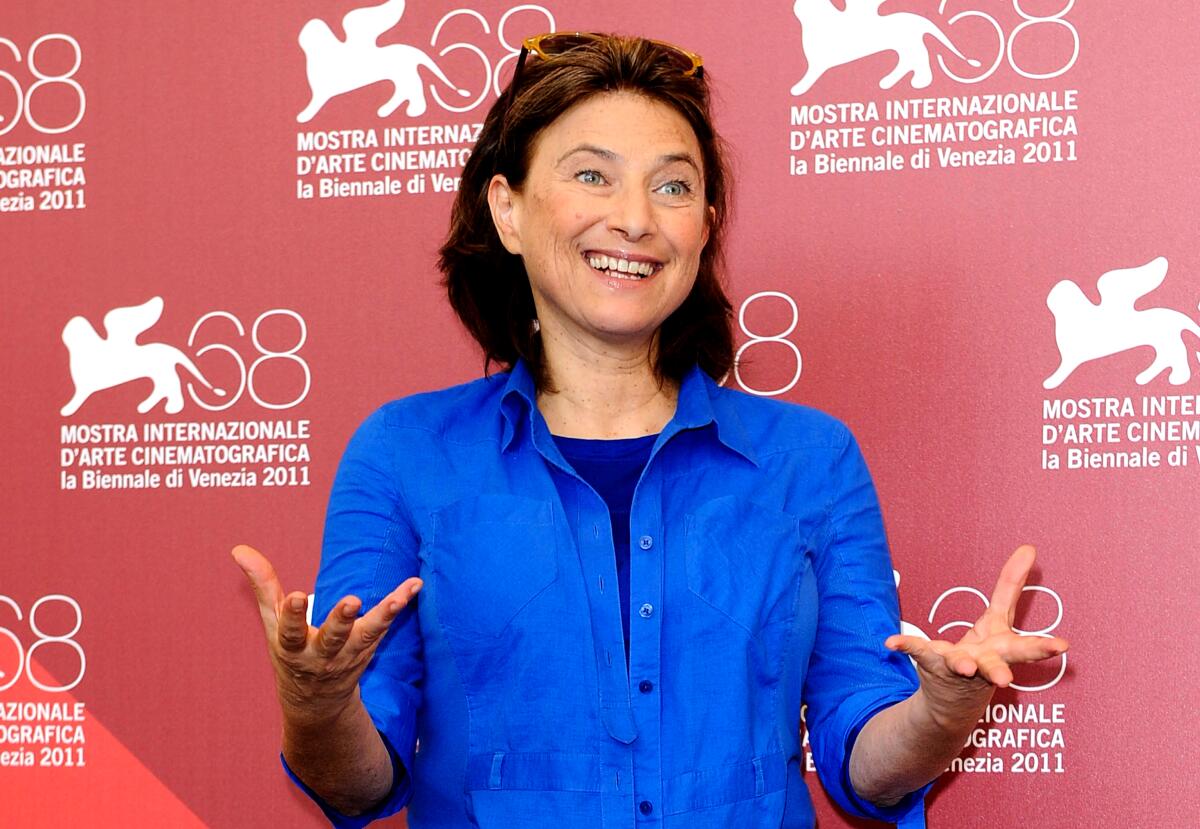
On Saturday, Acropolis Cinema will present a program of films by Chantal Akerman, who died by suicide in 2015 before seeing her epochal 1975 film “Jeanne Dielman, 23 quai du Commerce, 1080 Bruxelles” top the 2023 Sight & Sound poll of the greatest films of all time.
The highlight of Saturday’s program will be four 8mm short films shot by Akerman in the summer of 1967 and which were only discovered in 2021. These shorts precede 1968’s “Blow Up My Town” (“Saute ma ville”), the first recognized title in Akerman’s established filmography.
Also screening will be Akerman’s 2006 film “Down There” (“Là-bas”), with an introduction by filmmaker Nina Menkes. Made while Akerman was in Tel Aviv for a teaching job, the film transforms an exploration of her rented apartment into a consideration of identity.
‘Rambling Rose’ / ‘Introducing Dorothy Dandridge’
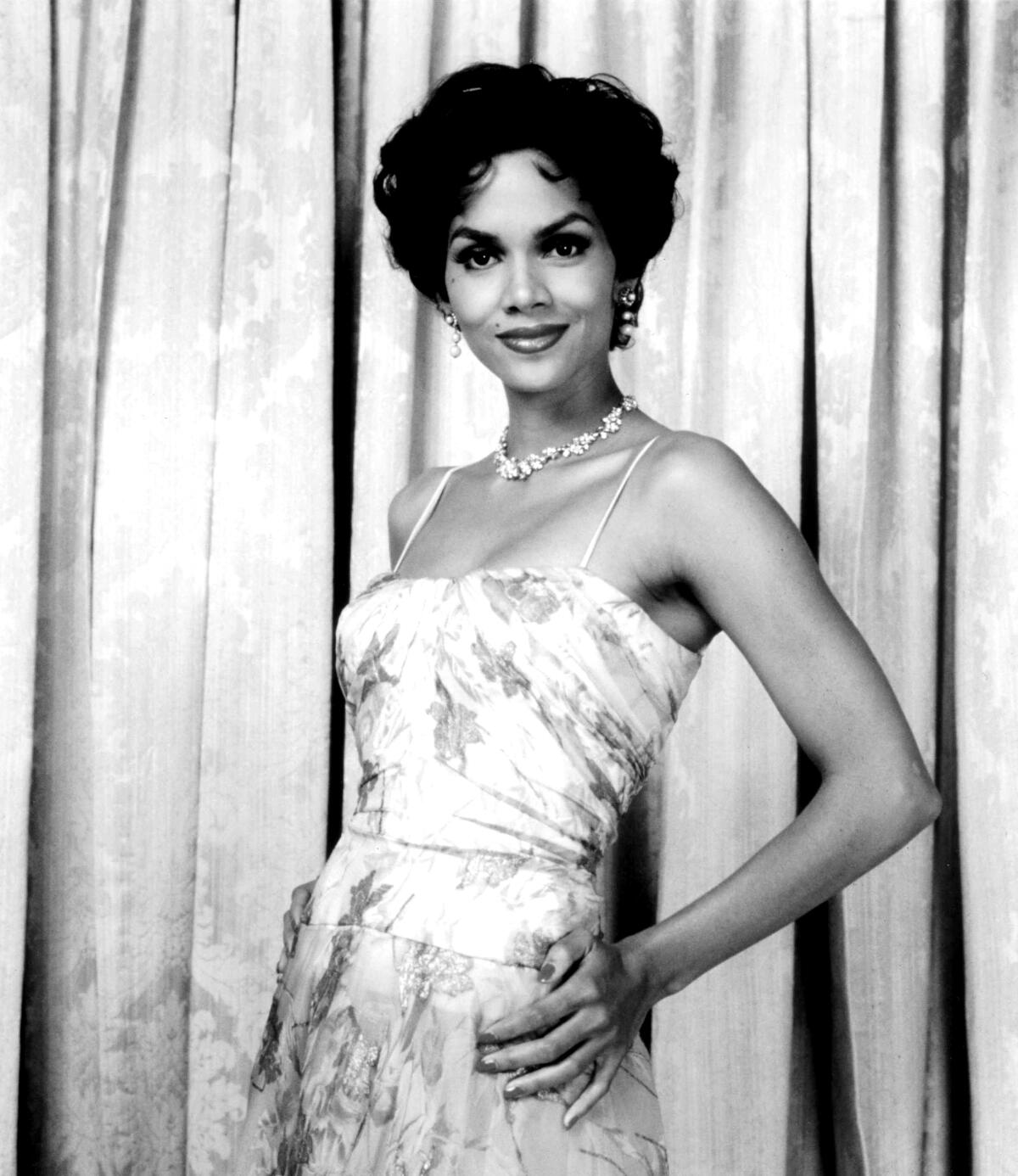
It says something about how much has been going on around town the past few weeks that I am only now finding space to mention the ongoing series at the American Cinematheque celebrating the work of director Martha Coolidge. (A screening of “Valley Girl” was introduced by Nicolas Cage!)
This Sunday there will be a double-bill of 1991’s “Rambling Rose” and 1999’s “Introducing Dorothy Dandridge,” both screening from Coolidge’s own 35mm prints. Coolidge posted online that this will be the first (and possibly only) theatrical screening ever of “Introducing Dorothy Dandridge,” which was made for HBO.
Star Halle Berry, also a producer on the project, won both a Golden Globe and an Emmy for her performance as Dandridge, star of films such as “Carmen Jones,” “Porgy & Bess” and “Island in the Sun.”
In a detailed 1999 story by Mimi Avins about the production of the film, Coolidge described some of what appealed to her about telling Dandridge’s story.
“To me, this was the classic beautiful woman in Hollywood story,” Coolidge said. “Dorothy’s problem was worse because she was Black, but she was a woman who was used up by the system and then thrown away. You couldn’t even put in a movie all the pressures those women were up against.”
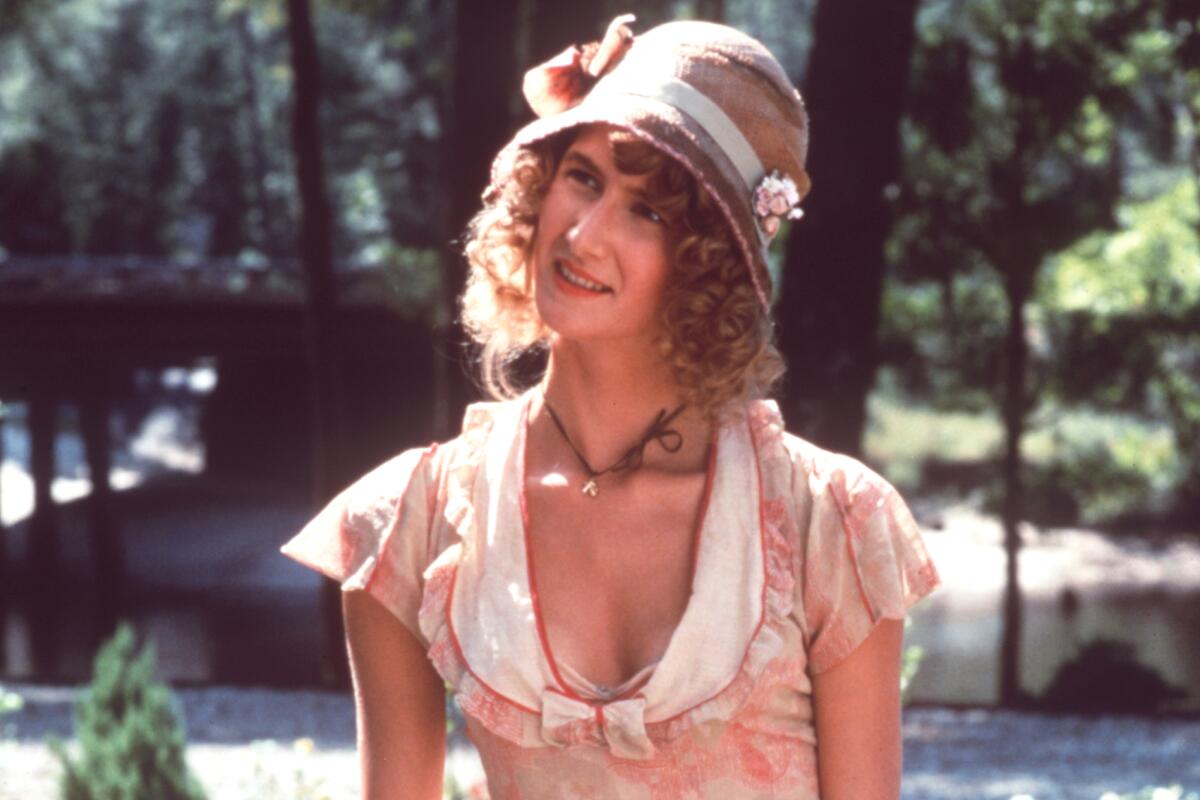
“Rambling Rose” is also not to be overlooked. Adapted by Calder Willingham from his own novel, it’s the story of a 19-year-old girl who spends a summer living with a Southern family. The film would earn Oscar nominations for Laura Dern and Diane Ladd, making them the first mother-daughter duo nominated for the same film or in the same year. The film would also win Independent Spirit Awards for best film, for Coolidge‘s directing and Ladd for supporting female performance.
Charles Champlin visited Ladd and Dern at Ladd’s West Hollywood apartment for a story in 1992 after their Oscar nominations. Besides talking about how they personally paid for some of the videotapes sent to potential voters, Ladd noted that when she was nominated for “Wild at Heart” she went on a severe diet before the Oscars ceremony.
Ladd recalled, “I lost to Whoopi Goldberg, a good friend and a wonderful person. Then I went home and ate a whole cake. Now my question is, should I bake another cake?”
In other news
‘Furiosa’ hits the road
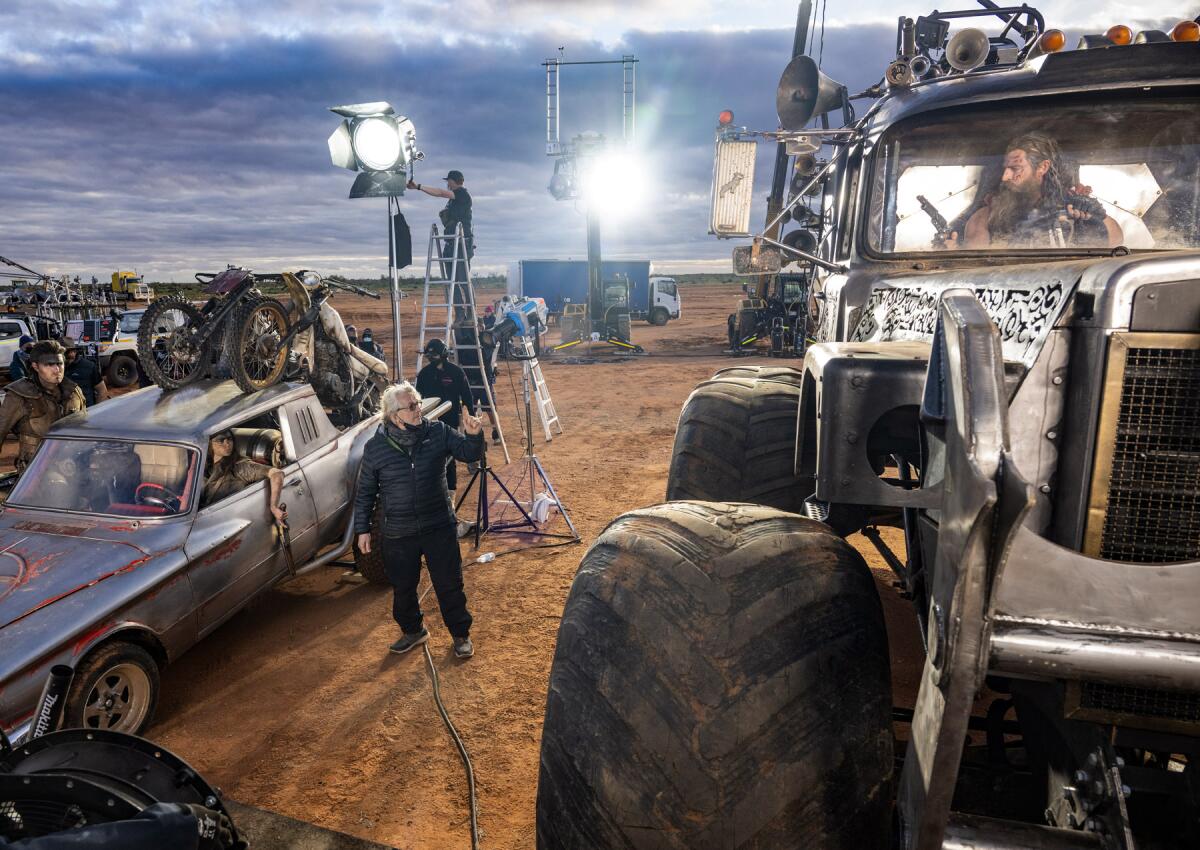
Kenneth Turan spoke to George Miller about the new film “Furiosa: A Mad Max Saga,” a prequel to 2015’s “Fury Road.” Anya Taylor-Joy plays the character originated by Charlize Theron, this time facing off against Chris Hemsworth’s Dementus.
The new film will premiere at Cannes, the fifth installment in a series that now stretches back 45 years to “Mad Max.” In creating the evolving, ever-fantastic world depicted in the films, Miller said of his inspiration, “It’s story — story rules, as we all know. I’m definitely addicted to story. It’s a life-long habit, looking for stories with a lot of iceberg under the tip.” He added, “we are hard-wired for story. The underlying elements are all sensed intuitively.”
Even at age 79, Miller still finds himself constantly drawn into a world of storytelling and imagination. As he said to Turan, “In every moment of human creativity, in every endeavor where people solve problems, even Albert Einstein at Princeton going out sailing in a little boat when the math became too granular, I’ve learned it’s the same. Just doing things that allow you to retreat into your imagination is the thing.”
Chris Pine’s ‘Poolman’
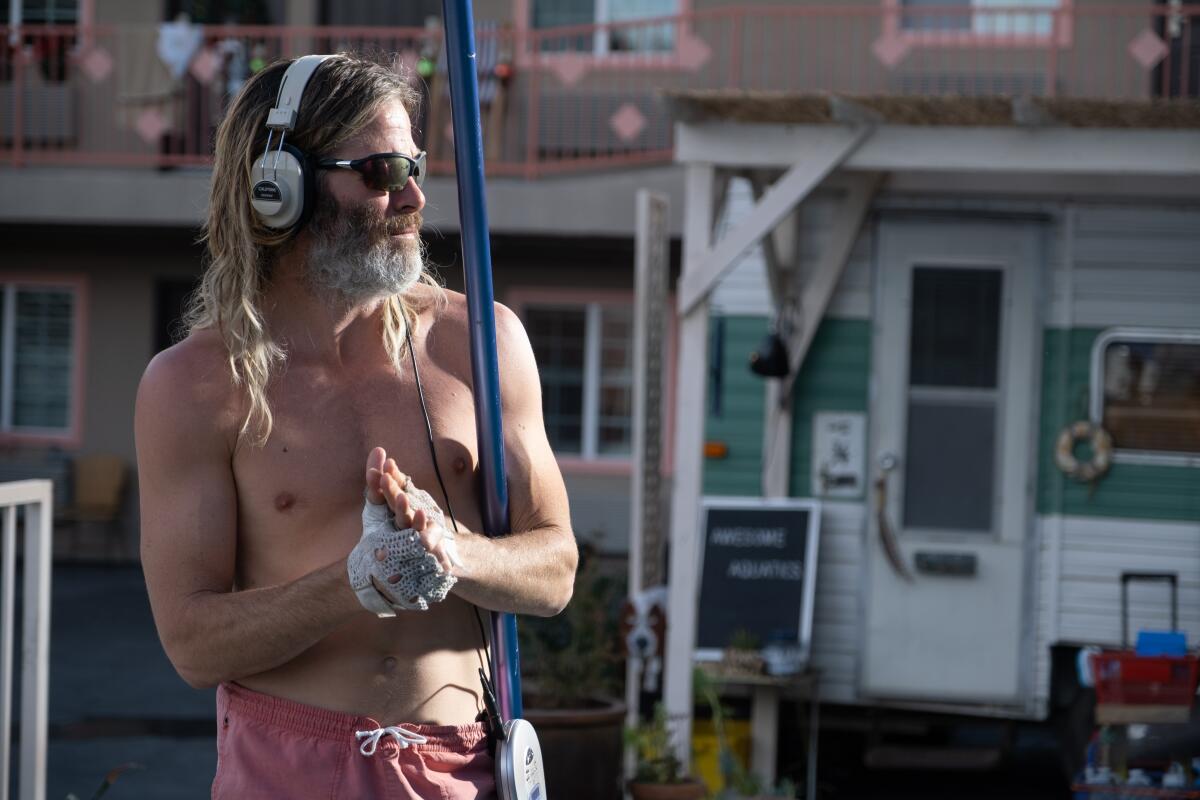
Having premiered at last year’s Toronto International Film Festival as one of a series of films directed by actors, Chris Pine’s “Poolman” now makes its way to theaters. The film is co-written and directed by Pine, who stars as Darren Barrenman, a Los Angeles pool cleaner who finds himself drawn into a web of spiraling intrigue.
In a review for The Times, Katie Walsh noted, “‘Poolman’ is Pine’s guileless take on the movies that he name-checks throughout, like the frequently referenced ‘Chinatown’ and ‘Who Framed Roger Rabbit.’ But it unfolds like more recent films such as ‘Inherent Vice’ and ‘Under the Silver Lake’ — self-conscious takes on L.A. noir that come with extra layers of existentialism and winking commentary. Pine seems less motivated to comment on the genre, just happy to be playing in the sandbox, flinging around the iconography, archetypes and extremely niche references.”
Walsh added, “Pine’s ‘Poolman’ is sort of the physical, emotional and spiritual embodiment of Los Angeles itself: earnest, silly and a little (or a lot) ridiculous, but insistently charming if you decide to surrender to the experience.”
Only good movies
Get the Indie Focus newsletter, Mark Olsen's weekly guide to the world of cinema.
You may occasionally receive promotional content from the Los Angeles Times.




